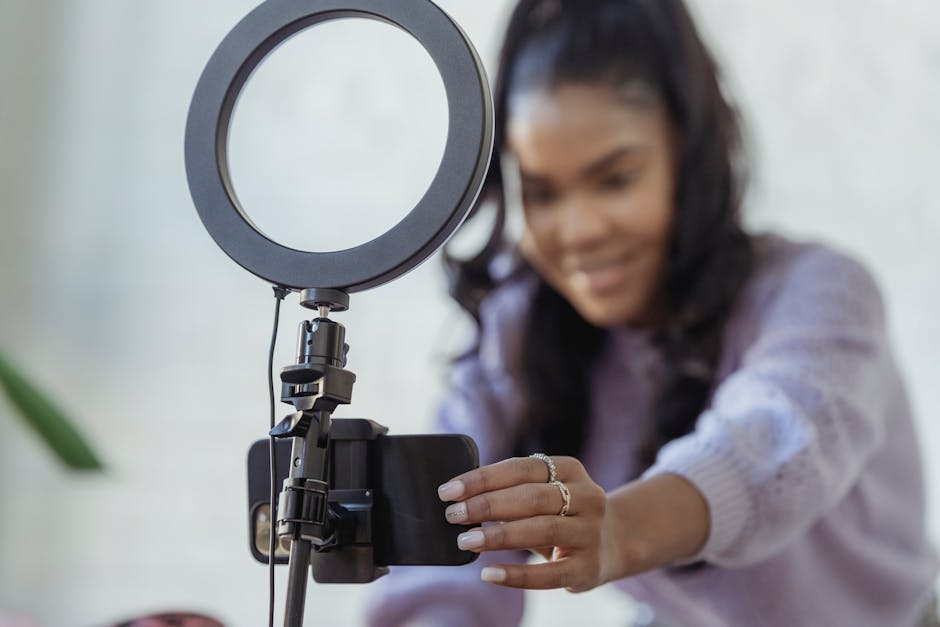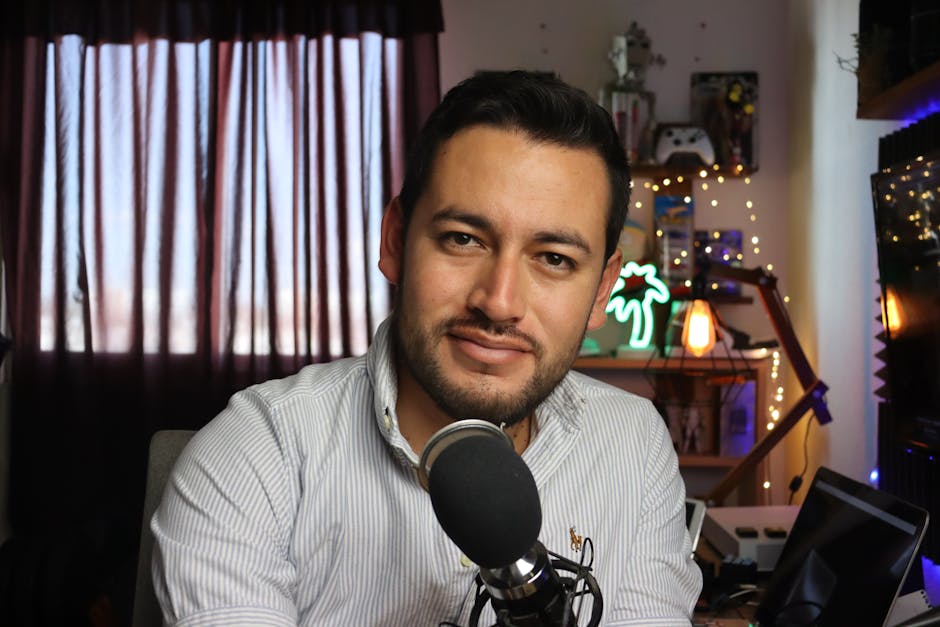How I Use Social Media to Drive Listeners to My Podcast.
How I Use Social Media to Drive Listeners to My Podcast
Growing a podcast in today’s crowded audio landscape isn’t just about producing great content; it’s about getting that content discovered. For me, social media isn’t just a place to hang out; it’s my most powerful engine for driving new listeners to my podcast. It’s where I connect, share, and ultimately, convert curious scrollers into loyal subscribers. This isn’t about generic tips; it’s about the specific, hands-on strategies I’ve refined over time to make social platforms work tirelessly for my show.
My Foundational Social Strategy: Crafting a Magnetic Presence for My Podcast
Before I even think about posting an episode link, I focus on establishing a clear, compelling social media presence that accurately reflects my podcast’s identity. This isn’t just about a logo; it’s about my podcast’s voice, values, and visual aesthetic. I treat each social profile as an extension of my show, ensuring consistency across all platforms. This means:
- Consistent Branding: My podcast’s cover art, color palette, and font styles are replicated across all my social profiles. This creates instant recognition, so when someone sees my content, they immediately associate it with my podcast.
- A Clear Value Proposition: My bios on every platform clearly state what my podcast is about and who it’s for. It’s not just “a podcast”; it’s “the podcast for [target audience] to learn about [specific topic] and achieve [specific benefit].” This helps attract the right listeners.
- Optimized Profile Links: I always use a link-in-bio tool (like Linktree or similar) to house all the essential links: my latest episode, subscription links to major podcast players, my website, and any relevant resources. This makes it incredibly easy for interested users to find and subscribe to my show from a single tap.
My goal here is to make every touchpoint on social media feel like a natural extension of my podcast, building familiarity and trust even before someone listens to their first episode. It’s about creating an inviting digital home for my audio content.
Beyond the Episode Link: My Approach to Repurposing Podcast Content for Social Media
Simply sharing a link to a new episode on social media is the least effective way to drive listeners. It’s passive and relies on people actively seeking out your content. My strategy is to aggressively repurpose my podcast episodes into bite-sized, engaging, and platform-native content that stops the scroll. This is where the real magic happens:
Snippets and Audiograms: The Soundbite Strategy
I comb through each episode for the most compelling 30-60 second clips – a powerful quote, a surprising statistic, a hilarious moment, or a thought-provoking insight. These aren’t just random cuts; they’re strategically chosen hooks designed to pique curiosity.
- Audiograms: I turn these audio snippets into animated audiograms using tools like Headliner or Wavve. These visual waveforms with captions make audio shareable and engaging on platforms like Instagram and Facebook. I always include a strong call to action (CTA) like “Listen to the full episode – link in bio!” or “Find us on Spotify and Apple Podcasts.”
- Short Video Clips (Reels/TikToks): For episodes where I have video recordings (even just a static image with my voice), I extract these short, impactful clips. I add dynamic text overlays, trending audio (if appropriate and relevant to the clip’s mood), and engaging visuals to make them native to vertical video platforms. These are incredibly effective for reach and discovery.
Visual Storytelling: Quotes, Carousels, and Infographics
Not everything has to be audio or video. I extract key takeaways, memorable quotes, or actionable advice from my episodes and transform them into visually appealing graphics:
- Quote Cards: Simple, branded graphics featuring a powerful quote from an episode. These are highly shareable and often spark conversation in the comments.
- Carousel Posts: On Instagram and LinkedIn, I create multi-slide carousel posts that distill an episode’s main points into digestible tips or a mini-story. Each slide builds anticipation, encouraging users to swipe through and ultimately listen to the full discussion.
- Infographics/Checklists: If an episode covers a step-by-step process or a list of resources, I condense this into an easy-to-read infographic or checklist. This provides immediate value and positions my podcast as a helpful resource.
Behind-the-Scenes and Teasers: Building Anticipation
I also use social media to share glimpses into the podcast creation process. This could be:
- A short video of me recording (with headphones on, mic visible).
- A sneak peek at a guest preparing for an interview.
- A poll asking listeners to vote on upcoming topics.
These posts build a sense of community and give my audience a reason to feel invested in the show, creating anticipation for new episodes.
Engaging My Community: Turning Scrollers into Dedicated Subscribers
Social media isn’t a billboard; it’s a two-way street. My most successful strategy for driving listeners isn’t just about broadcasting; it’s about building genuine connections and fostering a community around my podcast. This engagement is what truly converts casual followers into loyal subscribers.
Active Listening and Responding: The Core of My Engagement
I make it a point to actively monitor comments, DMs, and mentions across all platforms. Every comment gets a reply, every question gets an answer. This shows my audience that I value their input and that there’s a real person behind the microphone. This personal touch is crucial for building trust and rapport.
- Responding to Comments: I don’t just “like” comments; I engage with them. I ask follow-up questions, thank them for their insights, and sometimes even turn their comments into future episode ideas.
- Direct Messages: I encourage DMs for more personal questions or feedback. This private channel often leads to deeper connections and valuable insights into what my audience wants to hear.
Interactive Content: Sparking Conversations
I regularly use interactive features on social media to directly involve my audience:
- Polls and Quizzes: On Instagram Stories, Twitter, and Facebook, I run polls asking about episode topics, guest preferences, or opinions on recent discussions. This not only gathers valuable feedback but also makes my audience feel heard and invested.
- Q&A Sessions: I host live Q&A sessions (Instagram Live, Facebook Live) or use the Q&A sticker on Stories, where I answer questions related to my podcast’s niche or recent episodes. This real-time interaction builds excitement and directly addresses listener curiosities.
- “Ask Me Anything” (AMA): Occasionally, I’ll do an AMA related to my podcast or expertise. This helps position me as an authority and makes my audience feel more connected to me personally.
Leveraging User-Generated Content (UGC): My Listeners as My Best Promoters
When listeners share my podcast or content, I amplify it. This is incredibly powerful social proof:
- Resharing Stories/Posts: If someone tags my podcast or shares an audiogram of my show, I always reshare it on my own channels. This acknowledges their support and exposes their network to my podcast.
- Testimonials: I encourage listeners to leave reviews and ratings, and sometimes I’ll share positive excerpts (with permission) as social proof.
By actively engaging and empowering my community, I transform passive listeners into active advocates, who then become powerful drivers of new subscriptions.
Platform-Specific Playbooks: Where My Podcast Shines on Social Media
While my core strategy is consistent, how I execute it varies significantly across platforms. Each social media channel has its own culture, audience, and content formats that I leverage to maximize my podcast’s reach and appeal.
Instagram: The Visual Storyteller’s Paradise
Instagram is my go-to for visual appeal and quick engagement. I focus heavily on:
- Reels: Short, punchy video clips (audiograms with text, video snippets of me talking, behind-the-scenes) with trending audio are my primary growth driver here. I aim for quick hooks and clear CTAs.
- Stories: Interactive polls, Q&As, countdown stickers for new episodes, and quick “swipe up” (or link sticker) links to episodes. I use Stories for candid




Post Comment